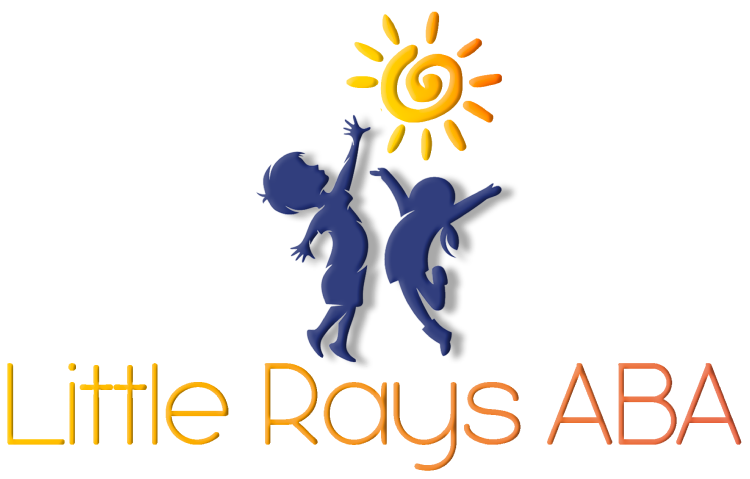
The Critical ABA Therapist Skills Every Parent Should Know
Qualities of an Effective ABA Therapist
An effective ABA therapist possesses a unique blend of skills and qualities to provide personalized and impactful therapy. Understanding these essential traits helps parents and family members make informed choices when selecting the right therapist for their child.
Client Assessment and Treatment Planning
ABA therapists are responsible for conducting thorough assessments to identify a client's strengths, deficits, and target behaviors. This initial process is crucial as it forms the foundation for developing a tailored treatment plan. A good ABA therapist should be proficient in:
- Conducting Functional Behavior Assessments (FBA)
- Identifying strengths and challenges
- Setting measurable goals
These steps ensure that the treatment plan is customized to the individual needs of each client, promoting the best possible outcomes.
| Assessment Tasks | Description |
|---|---|
| Functional Behavior Assessments (FBA) | Identifies the functions of specific behaviors to target interventions effectively |
| Strengths and Challenges Identification | Highlights areas of capability and areas needing support |
| Goal Setting | Establishes measurable and achievable targets for improvement |
Individualized Treatment Plans
Every individual receiving ABA therapy has unique needs and challenges. Hence, ABA therapists must create individualized treatment plans that cater specifically to these requirements. These plans are designed to promote skill development across various domains like communication, social interaction, and daily living skills.
- Customization: Each plan must be uniquely tailored to the client’s skills, interests, and family situations.
- Flexibility: Treatment plans should be adaptable, allowing for modifications based on ongoing assessments and progress reviews.
- Holistic Approach: Addressing diverse needs ensures comprehensive development and improvement.
Behavior Intervention Implementation
Implementing behavior interventions effectively is a critical skill for an ABA therapist. These interventions need to be scientifically backed and tailored to the individual’s specific needs. They should:
- Implement evidence-based practices: Use strategies proven to be effective in managing and altering behaviors.
- Track and document progress: Continuously monitor the effects of interventions to ensure they are achieving the desired outcomes.
- Collaborate with other professionals and family members: Ensure a cohesive approach by involving everyone engaged in the client’s care.
ABA therapists work closely with behavior analysts to review progress and identify effective strategies for the learner’s development. This collaborative effort ensures that the interventions remain effective and consistent.
Parents and caregivers should look for therapists who adhere to these key qualities and skills. For further information on what to look for in a qualified ABA therapist, visit our pages on ABA therapist qualifications and ABA therapist certification. Additionally, understanding ABA therapist job responsibilities and required ABA therapist experience can provide more insight into the capabilities of an effective therapist.
Collaboration and Communication
Effective collaboration and communication are crucial ABA therapist skills that significantly influence the success of therapy. This involves engaging with families, professionals, and utilizing data collection methods to monitor and promote progress.
Family and Professional Involvement
ABA therapists are responsible for closely collaborating with families and other professionals involved in the therapy process. This comprehensive approach ensures that skills learned in therapy sessions are generalized across different settings, enhancing their practical use in everyday life.
Key aspects of effective family and professional involvement include:
- Regular Communication: Regular updates and meetings with family members to discuss progress and any concerns.
- Goal Alignment: Collaborating with educators, speech therapists, occupational therapists, and other professionals to align goals and strategies.
- Support and Education: Providing education to families to help them understand and support the therapy process.
Involvement Responsibilities Table
| Stakeholder | Involvement Responsibilities |
|---|---|
| Family Members | Engage in regular meetings, provide insights, implement strategies at home |
| Educators | Collaborate on goals, integrate ABA strategies into classroom settings |
| Other Therapists | Align treatment plans, share progress, adjust interventions |
Data Collection and Progress Tracking
Data collection and progress tracking are fundamental components of ABA therapy. ABA therapists track progress through systematic data collection and analysis, enabling them to measure the effectiveness of interventions. This data-driven approach helps in tailoring treatment plans to meet individual client needs, ensuring that the therapy remains focused and effective.
Key elements of data collection and progress tracking include:
- Baseline Data: Establishing initial data points to understand the client's starting conditions.
- Ongoing Monitoring: Collecting data during each session to track changes and progress.
- Analysis and Adjustment: Regularly reviewing data to identify trends, success, or areas needing adjustment.
Progress Tracking Metrics Table
| Data Type | Purpose | Example |
|---|---|---|
| Frequency Data | Track how often a behavior occurs | Counting instances of a specific behavior |
| Duration Data | Measure how long a behavior lasts | Timing engagement in a task |
| Intensity Data | Assess severity of a behavior | Rating the impact of a behavior on a scale |
Utilizing these strategies, ABA therapists can ensure that their interventions are effective and make necessary adjustments to optimize outcomes for their clients.
Emphasizing collaboration, communication, and data-driven practices, ABA therapists can enhance the efficacy of their interventions and facilitate meaningful progress for individuals with autism spectrum disorder and related conditions.
Professional Development in ABA
For parents seeking effective ABA therapists, understanding the importance of professional development is crucial. Continuous learning and proper certifications ensure that therapists stay at the forefront of the field, providing the best possible care for individuals with Autism Spectrum Disorder (ASD) and related conditions.
Continuous Learning Importance
Continuous professional development in ABA is essential for enhancing skills, promoting career advancement, and improving outcomes for clients. Engaging in ongoing training demonstrates a commitment to the field, allowing ABA therapists to stay current with advancements and best practices.
Professional development includes various activities such as attending workshops, participating in webinars, and enrolling in advanced courses. These learning opportunities equip ABA therapists with the latest research, techniques, and tools needed to design and implement effective treatment plans tailored to the unique needs of each individual.
| Benefit | Description |
|---|---|
| Enhanced Skills | Improved understanding and application of behavior analytic principles and intervention strategies |
| Career Advancement | Opportunities for growth and increased value as practitioners |
| Improved Client Outcomes | Implementation of effective, evidence-based practices leading to better client results |
Training Programs and Certifications
Training programs and certifications in ABA are crucial for acquiring and refining skills in behavior analysis and intervention techniques. Through structured training programs, practitioners gain a deeper understanding of behavior analytic principles, assessment techniques, intervention strategies, and ethical considerations.
Several reputable certification programs are available for ABA therapists:
| Certification | Description |
|---|---|
| Board Certified Behavior Analyst (BCBA) | Requires a master's degree, completion of specific coursework, supervised fieldwork, and passing a certification exam ABA therapist certification |
| Registered Behavior Technician (RBT) | Entry-level certification that requires 40 hours of training, passing an assessment, and ongoing supervision ABA therapist qualifications |
| Board Certified Assistant Behavior Analyst (BCaBA) | Requires a bachelor's degree, completion of relevant coursework, and passing a certification exam ABA therapist experience |
Certification not only validates an individual's expertise but also signifies their commitment to adhering to ethical standards and best practices in the field. Continuous learning is crucial for maintaining these certifications, as it involves meeting ongoing education requirements and staying updated with the latest advancements.
Research consistently highlights the benefits of ongoing training in utilizing evidence-based practices and implementing effective interventions. Practitioners who engage in regular training are better equipped to address diverse client needs and achieve positive outcomes.
ABA Therapy Techniques
Understanding the key techniques used in Applied Behavior Analysis (ABA) therapy is essential for selecting a proficient ABA therapist. These methodologies are fundamental in helping children with Autism Spectrum Disorder (ASD) improve their behavior and learning skills. Here are three crucial ABA therapy techniques:
Positive and Negative Reinforcement
Positive and negative reinforcement are integral components of ABA therapy. Professionals and parents consistently use these techniques to teach children which actions are appropriate. Positive reinforcement involves providing a reward or praise immediately after a desired behavior to encourage its recurrence.
| Type of Reinforcement | Description |
|---|---|
| Positive Reinforcement | A reward or praise is given after a desired behavior. |
| Negative Reinforcement | An aversive stimulus is removed after a desired behavior. |
For instance, offering a child a sticker for completing their homework is a form of positive reinforcement. On the other hand, allowing a child to leave the dinner table when they finish their vegetables is an example of negative reinforcement. Consistent application of these reinforcements helps children understand acceptable behaviors through immediate consequences.
Discrete Trial Training (DTT)
Discrete Trial Training (DTT) is a structured method used to teach specific skills by breaking them down into smaller, more manageable components. Each element is taught individually, and positive reinforcement is provided after each correct response from the child.
| Step | Description |
|---|---|
| Instruction | The therapist gives a clear and concise instruction. |
| Response | The child responds to the instruction. |
| Feedback | The therapist provides immediate feedback, often in the form of positive reinforcement. |
| Data Collection | The therapist records the child's response for progress tracking. |
This technique is highly effective for teaching new skills, as it allows for repetitive practice and immediate feedback.
Antecedent-based Interventions (ABI)
Antecedent-based Interventions (ABI) focus on modifying the environment to reduce the likelihood of problem behaviors before they occur. This technique involves identifying the triggers that lead to unwanted behaviors and making changes to the environment to minimize these triggers.
| Component | Description |
|---|---|
| Antecedent Identification | Identifying the events that trigger unwanted behaviors. |
| Environmental Modification | Changing the environment to reduce the identified triggers. |
| Effective Antecedents | Implementing stimuli that encourage positive behaviors. |
For example, if a child is easily distracted by noise, creating a quiet learning space can help them focus better and reduce distractions.
These ABA therapy techniques are essential tools for any ABA therapist. Familiarizing yourself with these methods can help you make an informed decision when selecting the right therapist for your child.
Ethical Standards and Responsibilities
In the field of Applied Behavior Analysis (ABA), ethical standards are paramount for safeguarding the welfare and rights of clients. Adherence to these standards ensures that ABA therapists conduct themselves with integrity and professionalism.
BACB Ethics Code Adherence
An ABA therapist's commitment to ethical excellence is primarily guided by the Behavior Analyst Certification Board (BACB) Ethics Code. This code outlines the ethical guidelines and responsibilities that ABA therapists must follow to ensure the highest quality of care.
According to the BACB Ethics Code, therapists must:
- Respect Confidentiality: Maintain the confidentiality of all client information.
- Competence: Engage in services that are within their competence, based on their education, training, and experience.
- Integrity: Promote honesty and transparency in their professional actions.
- Professional Boundaries: Avoid dual relationships with clients to preserve professional boundaries.
- Client Rights: Prioritize the rights and welfare of clients, ensuring that they are treated with dignity and respect.
Role in Promoting Client Well-being
An essential skill for ABA therapists is their ability to promote and enhance the well-being of their clients. This encompasses various dimensions, including behavioral, emotional, and social aspects.
Key responsibilities include:
- Individualized Treatment Plans: Developing and implementing plans tailored to each client's unique needs and goals.
- Evidence-based Interventions: Utilizing interventions that are supported by scientific research to ensure effectiveness.
- Ongoing Monitoring: Regularly assessing and adjusting treatment plans based on client progress and data collection.
To understand more about the qualifications required to ensure client well-being, refer to our article on ABA therapist qualifications.
ABA therapists also play a crucial role in empowering clients and their families by:
- Education and Support: Providing education and resources to families to help them support their loved ones effectively.
- Collaboration with Other Professionals: Working alongside other professionals, such as educators and healthcare providers, to create a comprehensive support system.
To explore the varied responsibilities involved, see our page on ABA therapist job responsibilities.
By adhering to the BACB Ethics Code and practicing professional ethics, ABA therapists prioritize the well-being and rights of their clients. Upholding ethical standards not only safeguards the clients but also maintains the integrity and professionalism of the ABA profession.
Career Path and Requirements
For individuals considering a career as an ABA therapist, understanding the necessary education, training, and experience is essential. These professionals play a crucial role in the development and implementation of behavior intervention plans, particularly for individuals with autism and related conditions. This section details the requirements and career path for aspiring ABA therapists.
Education and Practical Training
Becoming an ABA therapist requires a substantial educational commitment. Aspiring therapists typically dedicate a minimum of six years to their education and practical training. This involves spending four years earning a relevant bachelor's degree, followed by an additional two years to earn a master's degree and obtain necessary certifications. Drexel University School of Education offers insight into this structured path.
| Education Level | Duration | Notes |
|---|---|---|
| Bachelor's Degree | 4 years | Focus on psychology, education, or a related field |
| Master's Degree | 2 years | Specialization in Applied Behavior Analysis (ABA) |
| Certification | 12-21 months | ABA certification for those with master's degrees |
Educational programs should be accredited and aligned with the standards set by the Behavior Analyst Certification Board (BACB). This ensures that the curriculum covers all necessary areas, including client assessment, treatment planning, behavior intervention implementation, and collaboration.
Field Experience and Professional Growth
Field experience is a critical component of an aspiring ABA therapist's training. Most states in the U.S. require over 1,000 hours of hands-on clinical experience, supervised by a qualified Board Certified Behavior Analyst (BCBA), for those seeking to become licensed BCBAs. This supervised experience allows trainees to apply their theoretical knowledge in real-world settings under expert guidance.
| Experience Type | Requirement | Who Supervises |
|---|---|---|
| Clinical Hours | 1,000+ hours | Qualified BCBA |
| Field Experience | Integrated into Master's Program | University Supervisors (e.g., Drexel's MS in ABA) |
Professional growth in ABA therapy also emphasizes continuous learning. The field of ABA is dynamic, with new research and advancements emerging regularly. To provide the best care, ABA therapists must engage in ongoing professional development. This includes participating in certification courses, workshops, seminars, and online ABA courses.
ABA professionals should explore various training programs to enhance their skillset and stay updated with current trends.
Successful ABA therapists exhibit skills and qualities that enable them to provide individualized, compassionate, and holistic care. These competencies lead to better outcomes for the individuals they support.
The career path of an ABA therapist encompasses comprehensive education, rigorous training, and a commitment to lifelong learning. By adhering to these requirements, aspiring professionals can ensure they are well-equipped to make a positive impact in the field.
SOURCES:
https://yourmissingpiece.com/blog/10-components-to-an-aba-treatment-plan/
https://www.autismspeaks.org/applied-behavior-analysis
https://drexel.edu/soe/resources/career-path/how-to-aba-therapist/
https://www.bacb.com/wp-content/uploads/2022/01/Ethics-Code-for-Behavior-Analysts-240830-a.pdf
https://gsep.pepperdine.edu/blog/posts/aba-techniques-strategies-for-behavior-analysts.htm
Related Posts





